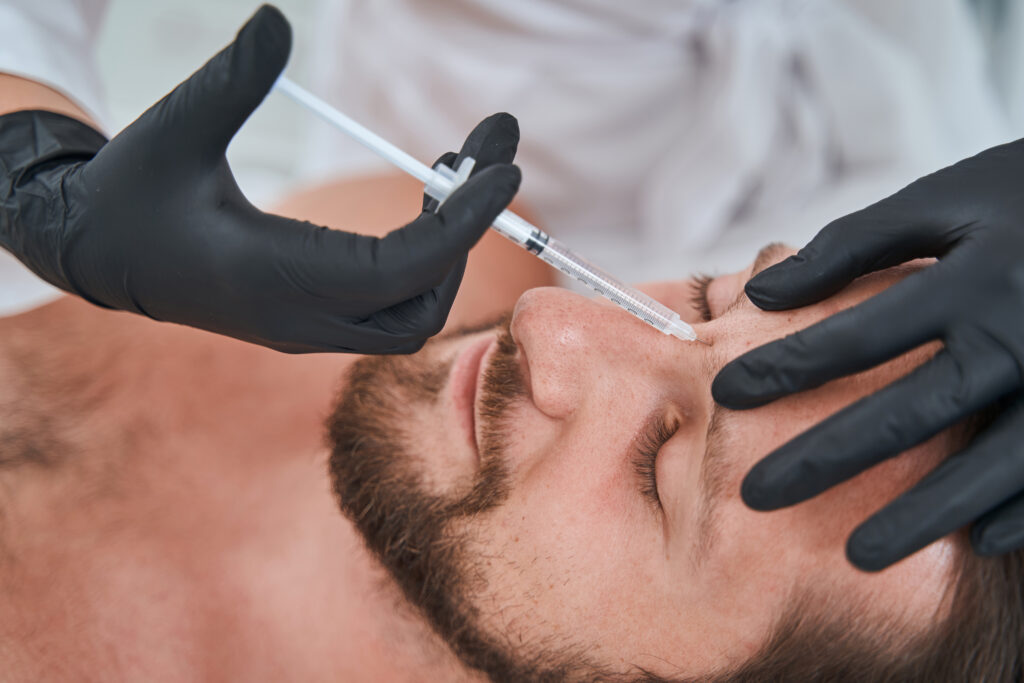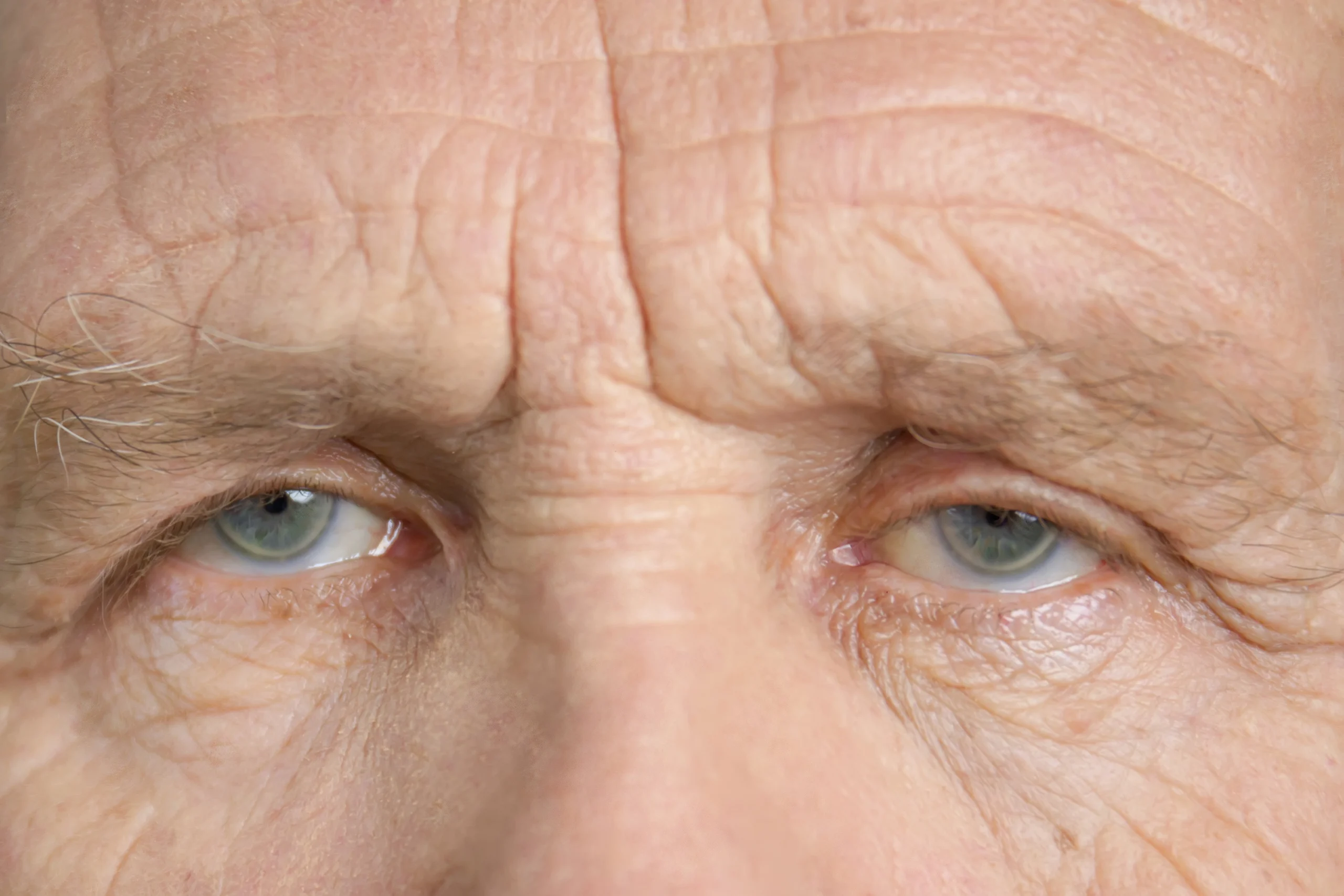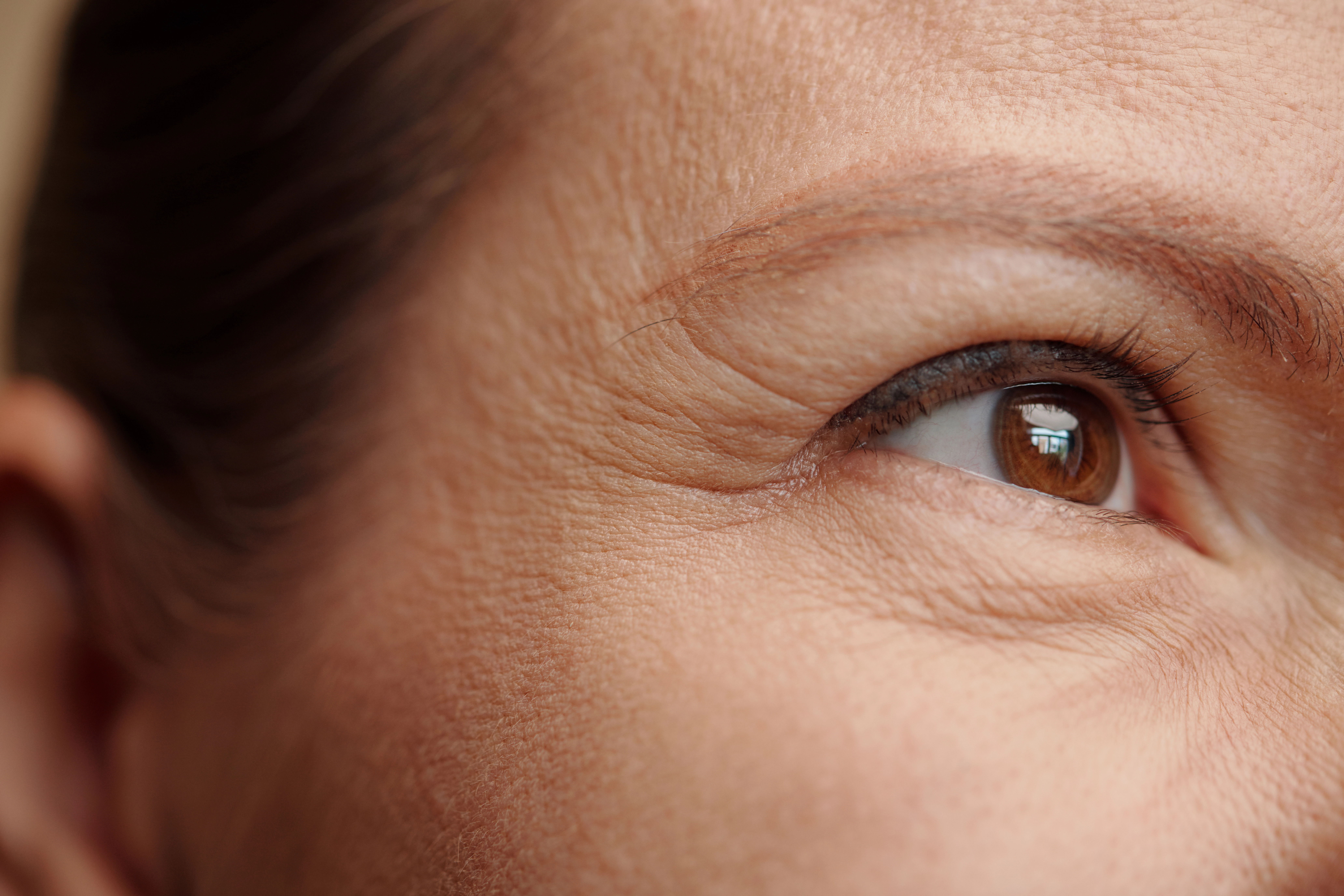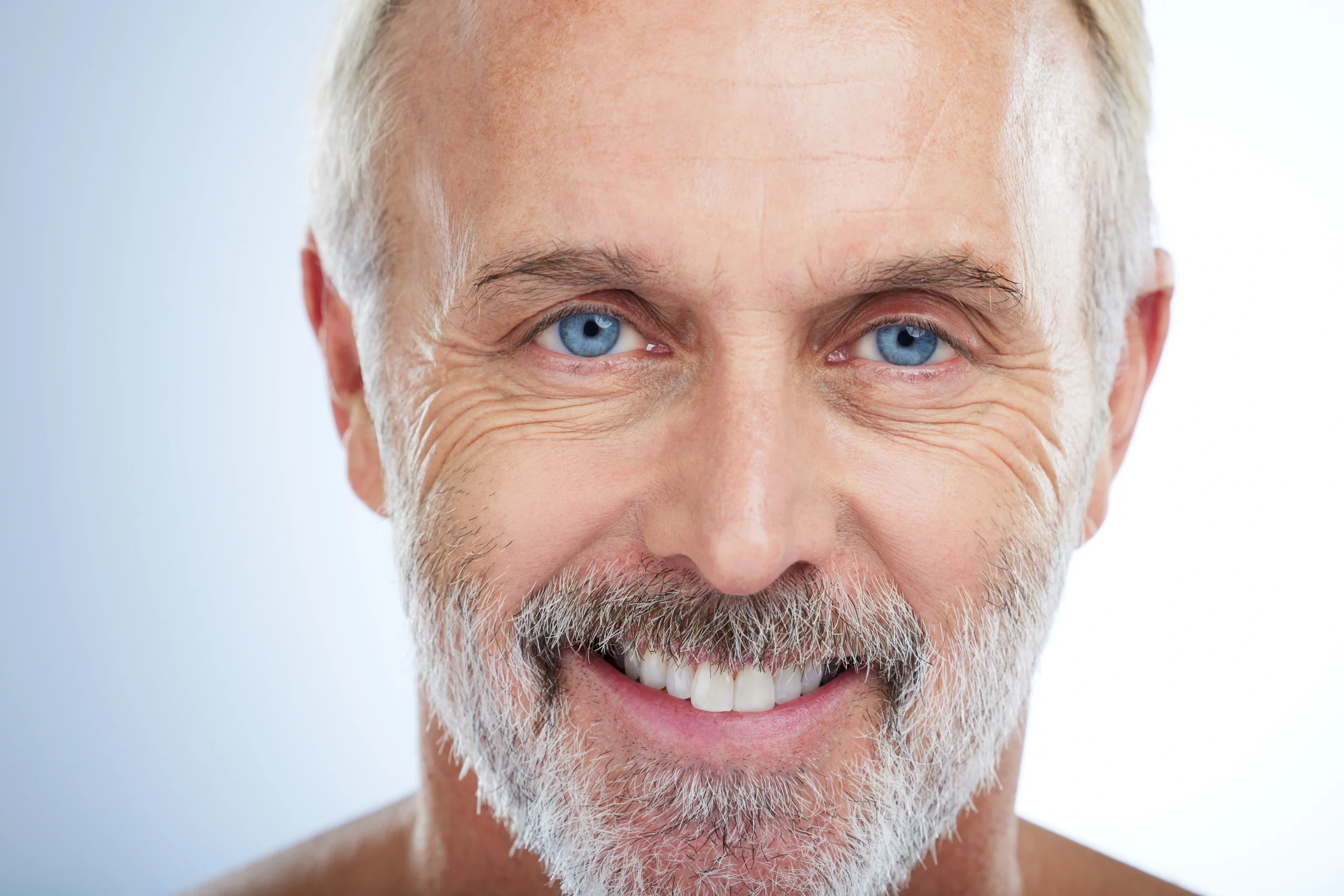Botox Injections
Botox & other Neuromodulator Injections
Our team of experts will analyze your individual facial structure and muscle movement to determine your ideal dosage of Botox. The Botox is injected into the muscle of the treatment area using an extra-fine needle causing minimal discomfort. The number of injections will depend on the amount of areas being treated, as well as the severity of the wrinkles and movement in the face.
The injections are administered by our Double Board-Certified dermatologist, who has extensive knowledge of facial anatomy. Her experience and precision allows her to achieve expert results.
Botox Injections
Botox Treatment Indications
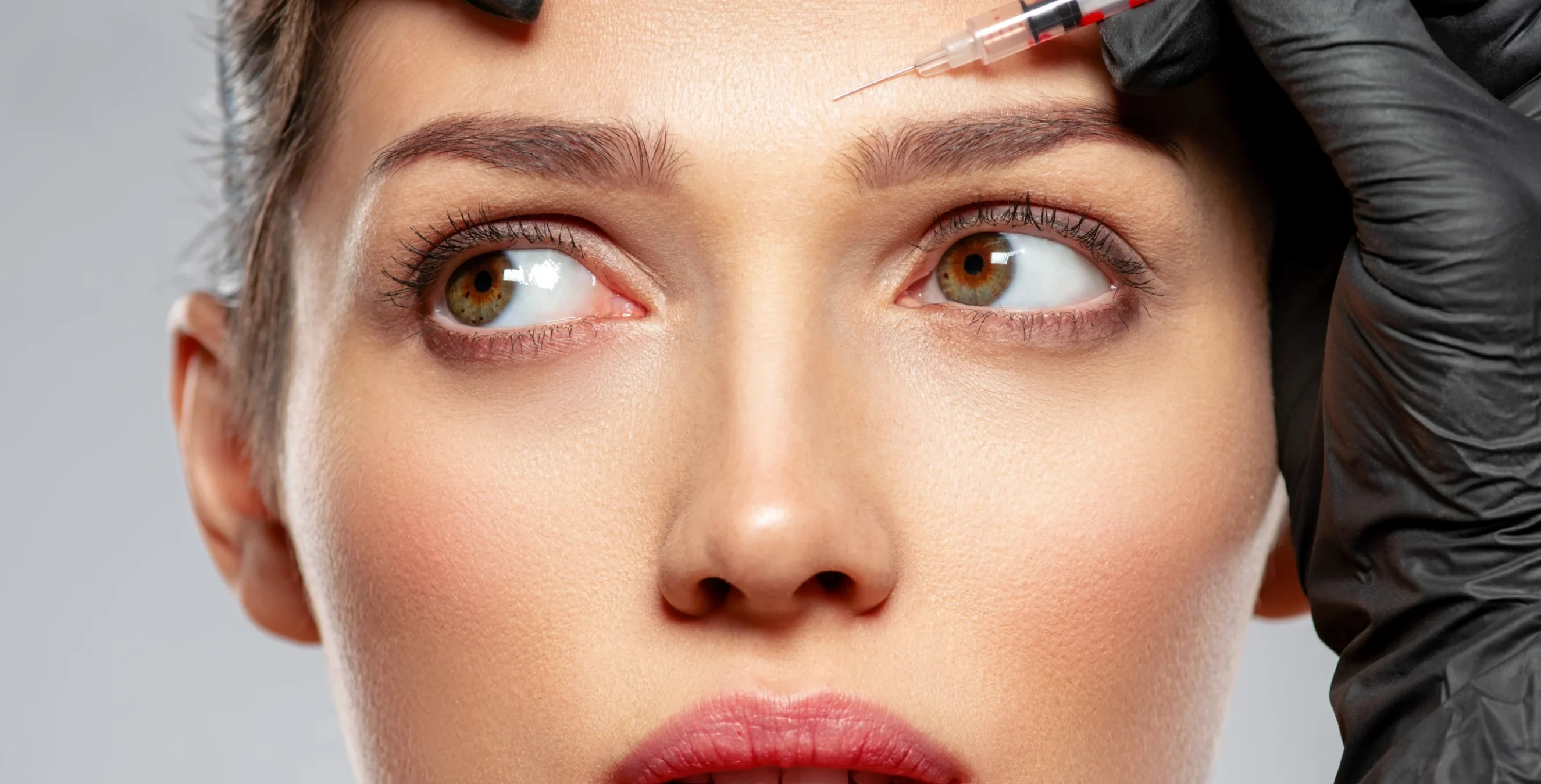
Botox for Forehead
Botox improves the appearance of horizontal lines on the forehead which are emphasized when raising your eyebrows.
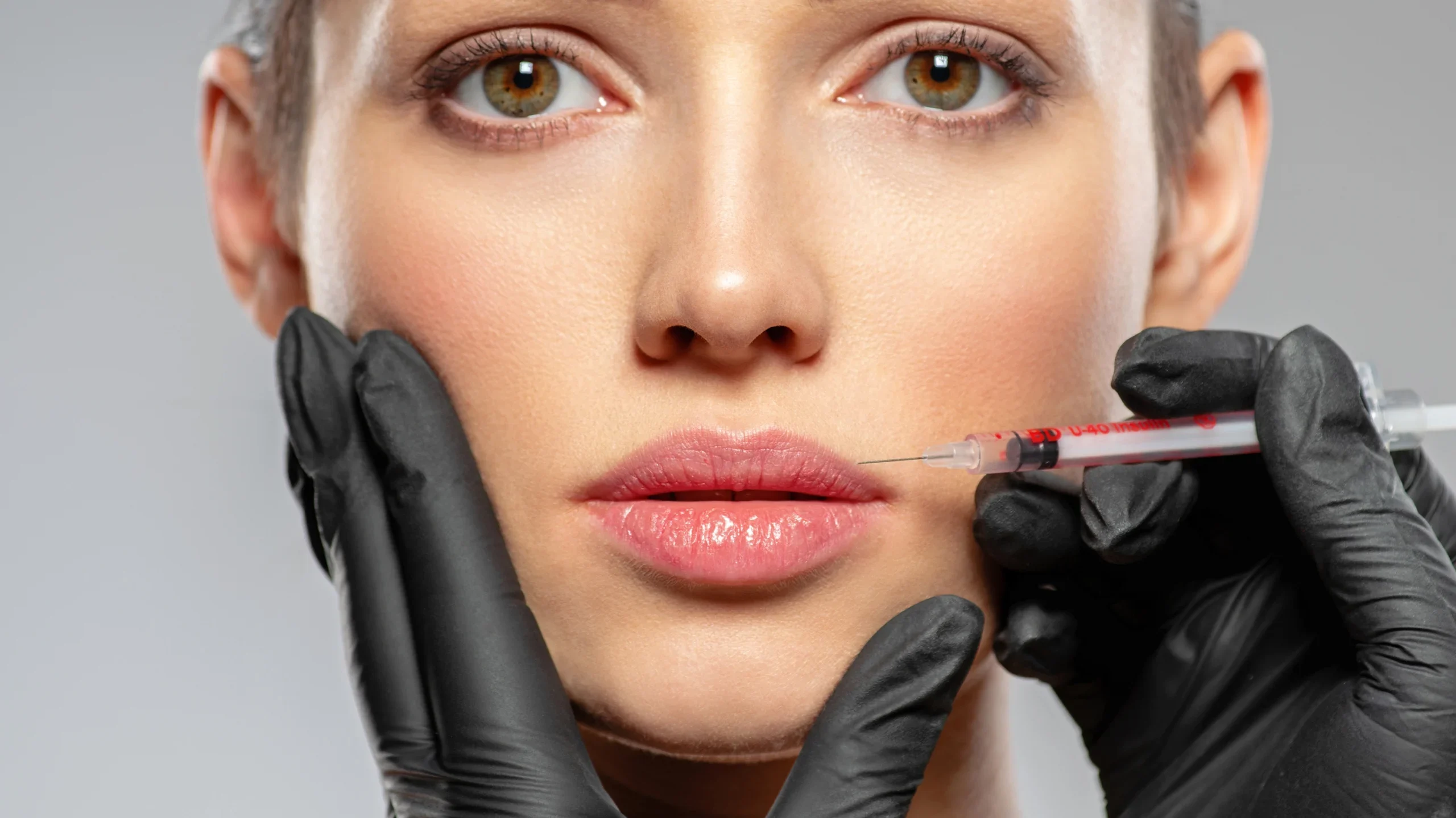
Botox for Lip Lines
Botox improves the appearance of vertical lines on the upper lip while giving you a “lip flip”.
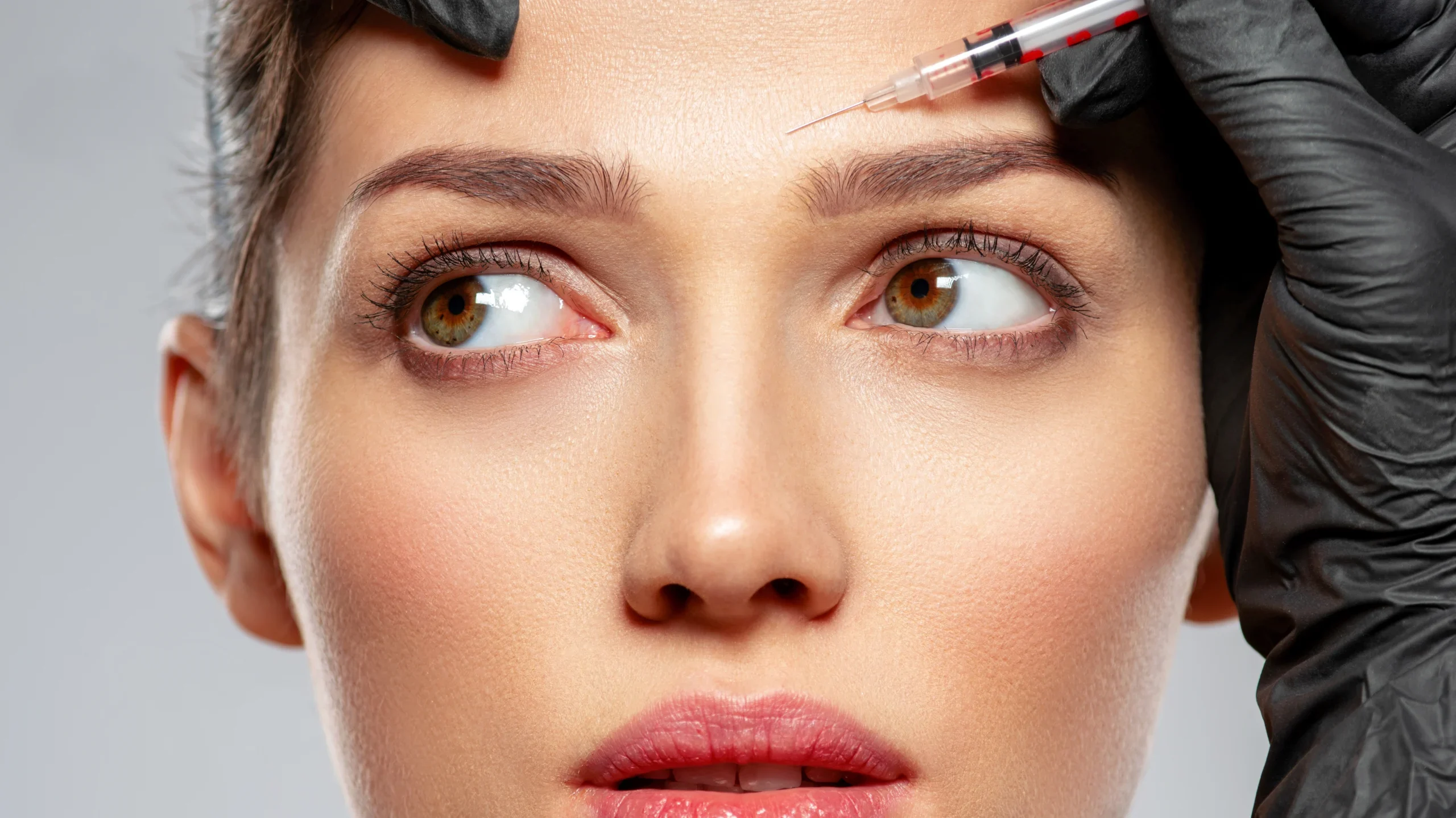
Botox for 11 Lines
Botox softens the vertical lines in between the eyebrows referred to as the “11’s” which are emphasized when frowning.
Botox Treatment
Botox and Neuromulator Injections
Botulinum toxin is a neuromodulator produced by a bacterium called Clostridium botulinum. These neuromodulators prevent nerve signals from being transmitted from nerves to muscles, causing temporary muscle softening without damaging nerve structures.
There are seven types of botulinum toxin, individualized from A to G. Toxins A, B and F are the most potent. For medical or aesthetic applications, types A and B are used, with A being the most widely used. There are several brands of botulinum toxin on the market, each with their own benefits. At FCP Dermatology, Botox and Dysport are typically used depending on the desired result of each patient.
Botox removes visible signs of aging.
Botox is minimally invasive with no downtime.
Botox results are seen after 2 weeks.
Botox is a virtually painless procedure.
Botox Treatment Details
What is Botox used for?
The injection of neuromodulator into the muscle through the skin temporarily eliminates or reduces expression wrinkles (those that appear when making any movement or face gesture) such as the forehead, between the eyebrows, neck and “crow’s feet”. These fine lines are caused by the contraction of the underlying muscles. The neuromodulator temporarily softens these muscles, leaving the skin looking smooth and more youthful.
Worry lines on the forehead are caused by raising the eyebrows. Due to contraction of the frontalis muscle when raising the eyebrows.
Crow's feet around the eyes are due to smiling and activity of the obicularis oculi muscle. Botox® can improve the lines around your eyes which are most obvious when smiling.
Glabella lines, often referred to as “elevens” are the vertical lines between the eyebrows that form from frowning the eyebrows, making you look angry. Botox® for the glabella lines creates a softer looking appearance, while preventing them from becoming deeper in the future.
A gummy smile can be treated with Botox® to reduce the amount of gums showing when smiling. Botox® is injected in the area above the lip to weaken the muscle that elevates your lip.
Botox® can be injected into the chin muscle to soften the dimpling and relax your chin that curls upward over time.
Botox® around the sides of the eyebrow can result in lifting the eyebrow, opening up the eyes.
Botox® can be injected into the bands in the neck that form over time, resulting in a smoother, tighter looking neck.
Masseter muscles can become stronger and larger over time. Patient’s who grind their teeth at night may also suffer from pain and migraines. Botox® to the masseter muscle can improve teeth grinding while weakening the muscle and therefore shrinking it in size.
Botox® can be used to treat excessive sweating, otherwise known as hyperhidrosis. Botox® weakens the sweat glands, providing patient’s relief from excessive sweating which may negatively impact their daily life.
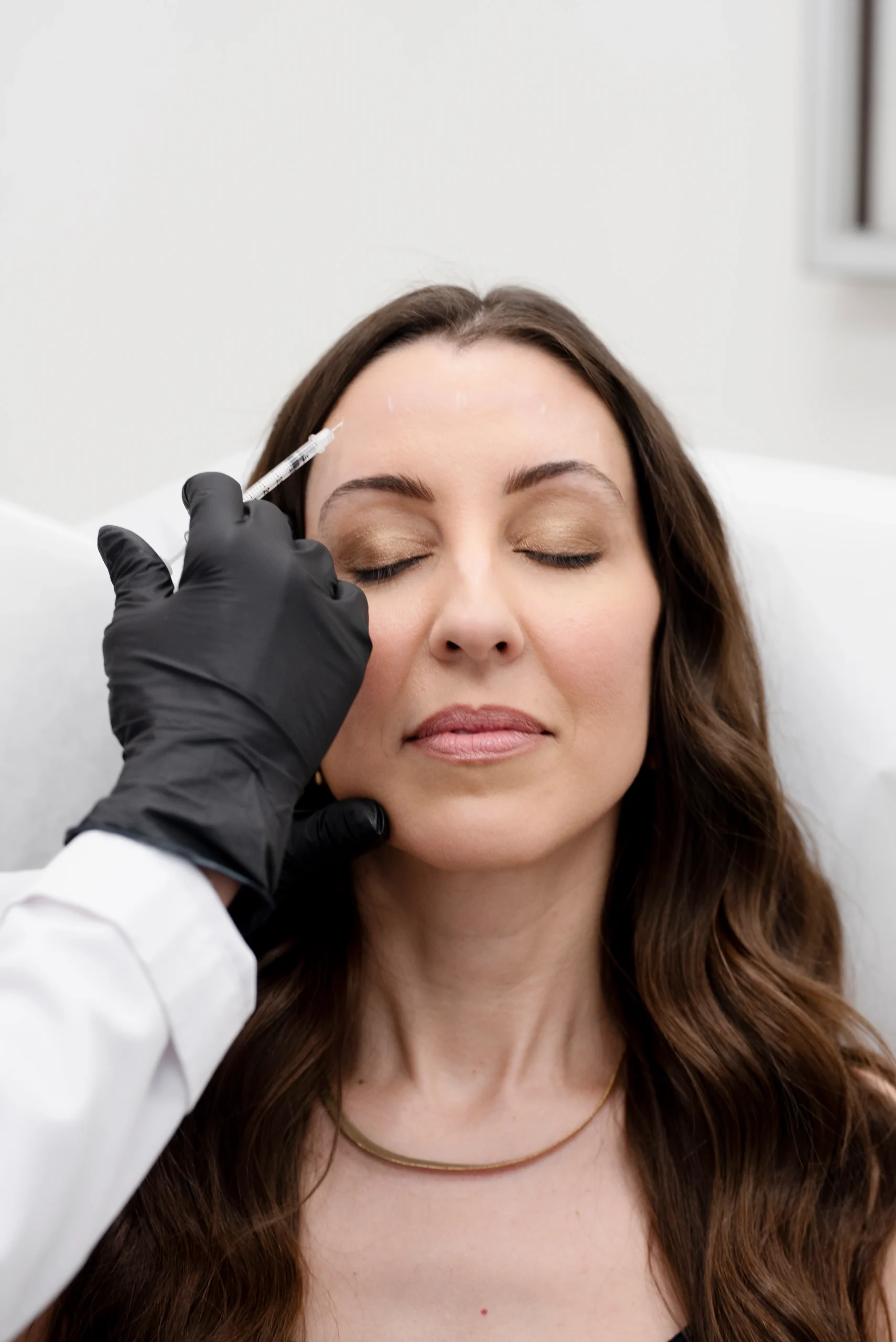
View Similar Treatments
Botox Treatment Experience
What To Expect During a Botox Procedure
Botox procedures are minimally invasive, quick, and pain free. The technique consists of the infiltration of the neuromodulator in the muscle of the area to be treated, causing it to relax and inhibiting its movement.
Before the Treatment – Most people have little or no discomfort during the procedure. Your Botox journey will begin with a comprehensive cosmetic consultation. Your unique facial structure and anatomy will be analyzed in order to provide you with the appropriate treatment for your desired result. Your Botox dosage will be specifically prepared to address the severity of your wrinkles and muscle movement.
During the Procedure – Botox procedures are generally quick and painless. Your Botox dosage will be drawn up into thin sterile needles, then injected into the muscles being treated. The number of injections needed depends on many factors, including the size of the area to be treated and the severity of the muscle movement.
After the Procedure – Do not rub or massage the treated area for 24 hours. This can help prevent the toxin from spreading to a different area. You will be required to refrain from laying down for 4 hours following the treatment to prevent migration of the product. You will be able to return to your normal activities immediately after the procedure.
Results – Botox injections usually take effect one to three days after treatment, with the maximum effect appearing after 2 weeks. To maintain the effect, you will need regular follow-up injections.
Your expert Dermatologist
Meet Our Double Board-Certified Dermatologist
Our Dermatologist
A life dedicated to Dermatology and skin care
Dr. Kristy Bailey is a Double Board-Certified Dermatologist and Medical Director and Founder of FCP Dermatology. She has a wealth of knowledge and expertise in Medical, Surgical, and Cosmetic Dermatology and is recognized as an expert in cosmetic injectables and minimally invasive procedures.
Her vision was for a world-class facility where patients can feel safe, comfortable, and pampered. A little oasis in the busy financial district, where everyone leaves looking more rested and youthful.
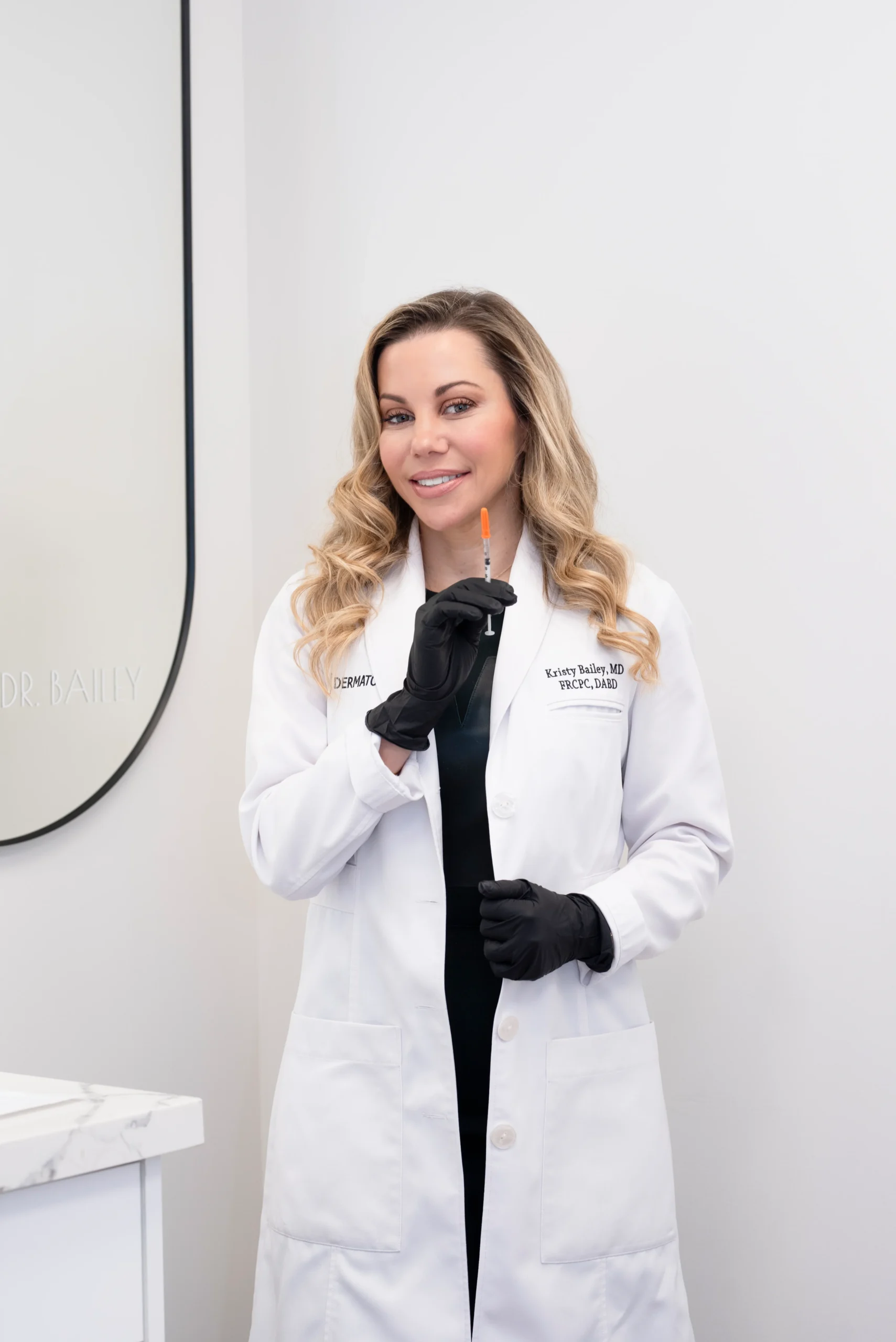
Dr. Kristy Bailey
MD, FRCPC, DABD
Dermatology Treatments
We offer a wide range of Dermatology treatments
We offer over 40 different dermatology and skin care treatments including; Botox, filler, facials, peels, body rejuvenation, face lifts, brow lifts, mole removal, wart removal, laser hair removal, dermal fillers, skin boosters, Radiesse filler, Sculptra, Belkyra Deoxycholic Acid, PRP treatment, botox for hyperhidrosis, Sclerotherapy for spider veins, hydrafacials, medical microneedling, carbon peels, vampire facials, green peels, skin tightening, melasma treatments, hyperpigmentation treatments, skin resurfacing and much more.
Specialists in Botox injection Treatments
FCP Dermatology is your Toronto Dermatology Clinic! Learn more about our Botox and our other available injectable treatments by contacting us!
All treatments are overseen by our Dermatologist
There are hundreds of nerves and arteries in your face and only a Board-Certified Dermatologist should be trusted to inject it.
At FCP Dermatology, all of our injections are performed by our Double-Board Certified Dermatologist Dr. Kristy Bailey, MD, FRCPC, DABD.
RELATED TREATMENTS
Related Skincare Concerns
Botox Target Specific Skincare Concerns
Frown Lines
Frown lines, commonly known as “11 lines” or “brow furrows,” are visible signs of aging from repetitive facial movements.
Crows Feet
Discover causes, treatments, and prevention tips for crows feet. Get expert insights on reducing wrinkles and achieving a refreshed appearance.
Fine Lines and Wrinkles
Explore proven solutions for smoother, youthful-looking skin. From skincare tips to treatments, discover effective strategies to diminish wrinkles and fine lines.
Botox Treatment FAQ
Frequently Asked Questions about Botox
Botox is a brand name for botulinum toxin type A, a neurotoxin that temporarily relaxes muscles. It is commonly used for cosmetic purposes to reduce the appearance of wrinkles and lines on the face.
There are seven types of botulinum toxin, individualized from A to G. Toxins A, B and F are the most potent. For medical or aesthetic applications, types A and B are used, with A being the most widely used. There are several brands of botulinum toxin on the market, each with their own benefits. At FCP Dermatology, Botox and Dysport are typically used as they are the Lamborghini and Ferrari of neuromodulators.
Treatment with Botox is not painful and is very well tolerated.
The injection sites will be slightly red and swollen for 10 minutes immediately after the procedure. Patients must avoid lying down horizontally for four hours following the treatment to avoid migration of the Botox.
If Botox injections are administered by an experienced Dermatologist such as Dr. Bailey then any side effects are extremely rare. Side effects that can occur with an inexperienced injector are:
- A temporary droop of one or both eyelids. This usually lasts 2-4 weeks, but may last months.
- Depending on the site of injection, asymmetry may appear at the eyebrows, mid-face, mouth or at other sites.
- When injections are performed in the neck, difficulty swallowing and neck weakness may occur.
- When injected above the lip-line, difficulty puckering, whistling or drinking are occasionally seen.
Botox injections should not be given to patients who are pregnant or breastfeeding. Patients with neuromuscular disorders (eg. myasthenia gravis) should also not be given neuromodulator injections.
Neuromodulators enhance and complement other aesthetic treatments such as facial fillers, chemical peels, PRP and microneedling.
Botox is considered a cosmetic procedure and is not covered by OHIP. Your insurance provider may cover the use of Botox for hyperhidrosis.
Advise your experienced Dermatologist if you've had any type of Botox injections in the past. Alert them of any medical allergies, or if you have any neuromusclar conditions.
The softening of fine lines appears on the second or third day after the botulinum toxin injection and progressively intensifies until the end of the second week. This timeline varies according to the muscle treated. It usually lasts between three to four months, although the response may vary between patients.
There are hundreds of nerves and arteries in your face and only a Double Board-Certified Dermatologist should be trusted to inject it.
At FCP Dermatology, all of our injections are performed by our Double-Board Certified Dermatologist Dr. Kristy Bailey, MD, FRCPC, DABD.
There is no specific age to start getting Botox. The decision to undergo Botox treatment depends on individual factors such as skin condition, concerns, and personal preferences. Some people start getting Botox in their late 20s or 30s as a preventive measure, while others begin when they notice visible signs of aging.
Botox is commonly used to reduce the appearance of dynamic wrinkles, which are caused by repeated muscle contractions. It is often used to target forehead lines, frown lines between the eyebrows (glabellar lines), and crow's feet around the eyes.
Botox works by blocking nerve signals to the muscles where it is injected. This causes temporary muscle weakening, which smooths out wrinkles and lines in the treated area.
